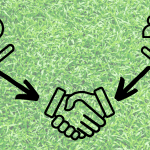
Whether you are growing organically, through mergers and acquisitions or a mixture of both, scaling your culture with your team is critical.
This task can be challenging as you work to accommodate a larger workforce with multiple locations as communication breakdowns can lead to misunderstandings, misalignment, and a lack of cohesion.
“Consistency across the board, leadership alignment is critical, employee engagement motivation and alignment with company cultural principles is key, and being able to adapt to change is extremely important,” says Jerry Ashmore, director of workplace development and safety for The Greenery, based on Hilton Head Island, South Carolina.
Joseph Barnes, marketing director for Yellowstone Landscape, headquartered in Bunnell, Florida, says their biggest challenge has been adding new services and locations that are farther and farther away from their home base in Florida. Not only do they have different time zones, but they have to trust the people in the field to handle services like snow and ice management.
“I think that’s the biggest challenge for us is just making sure that we’re always understanding what the branch needs are and not trying to dictate how they should be running their business,” Barnes says.
Balancing Branch Autonomy
Barnes says they realized early on that they’re not trying to rubber stamp their branches and make each exactly the same. Whether the branch developed organically or from an acquisition, each has a local culture and feel.
“If they’ve been doing things really well, and they’ve got great ideas, we want to incorporate that into all of our other branches,” Barnes says. “I think it’s really a matter of understanding that we don’t have all the answers. We don’t have it right. We’ll never have it right. We can always improve and every new branch is a way for us to really explore and test our best practices and then figure out what can we do to get better.”
Mike Monde, VP of people & culture for Ruppert Landscape, based in Laytonsville, Maryland, says it’s important to recognize that culture evolves and how they embody their values must continue to evolve as they enable individual branches to develop their own traditions and unique ways of operating.
“For example, the tools we used to communicate with our team 25 years ago look very different than how we’re communicating with our team today — yet it remains an important part of core values,” Monde says.
For companies they acquire, Yellowstone strives to honor their legacy and retain the elements that made that company’s culture so strong.
“If that’s been a part of something you’ve done for 15 or 20 years, why would we ask you to stop that just because we changed the logo on the side of the truck and you’re wearing a different logo on your vest now?” Barnes says. “A lot of times what will end up happening more often than that is, ‘Hey, that’s really cool. We should talk about that in one of our big national meetings.’”
An example of this is one of their New Mexico locations bringing a food truck in the spring and putting up a ‘We’re Hiring’ banner, where candidates can enjoy a free lunch and talk to a recruiter and some of their current employees. Barnes says this was a very successful recruiting method for this location and they’ve implemented it in other markets as well.
“We have these events and make it much more like a family feel,” Barnes says. “For a larger company, that’s the thing that most people are concerned about. What am I walking into? I don’t really know this big company. Are they going to take care of me? But if you can have those questions answered before you even go fill out an application and get a free lunch, I’d sign up for that.”
Hold Teams Accountable
To prevent your culture from deteriorating over time, Ashmore says you need to be consistent in your hiring, onboarding and training.
Barnes says they haven’t experienced their culture slipping, but at times, people will look for shortcuts when Yellowstone is playing a long-term game. He says they have found certain locations focus on the wrong thing from time to time, but thanks to their key priorities being outlined they can always hold firm to that.
“If there’s a branch that maybe wants to accelerate their growth and take on a project that isn’t going to be financially beneficial for us, we’ve got to dial back and say, ‘Okay, how does that fit in the grand scheme of what we’re doing?’” Barnes says. “Yes, it’s a short-term gain, but this is a customer who is not willing to invest.”
Barnes says by having conversations with the branch manager, they can get them to refocus on the basics. He notes because they promote internally, many times the regional vice president has been in the branch manager’s shoes and can relate to them.
Empower Employees
Monde says they rely heavily on their tenured employees to help spread the company culture to new locations.
“We’re a company that promotes from within, so when we open a branch in a new market, we look for team members who are ready to step up and take on more responsibility and new challenges and are willing to relocate,” Monde says. “Our goal is to have a core group of seasoned employees who understand our values take the lead in newer branches.”
One of Ruppert’s core values is ‘take ownership,’ so they ask their employees to share in the responsibility of disseminating their culture.
“We ask each employee to think of the company as ‘my company’ versus ‘the company,’” Monde says. “So we expect our tenured employees to mentor those who are newer to our team — which includes talking about our values and modeling our culture through their actions and decisions. That could be anything from demonstrating a sense of hustle and efficiency on a jobsite, to saying thank you to a team member for doing a great job.”



